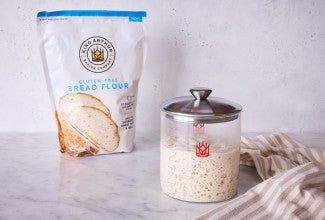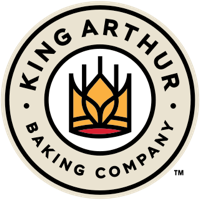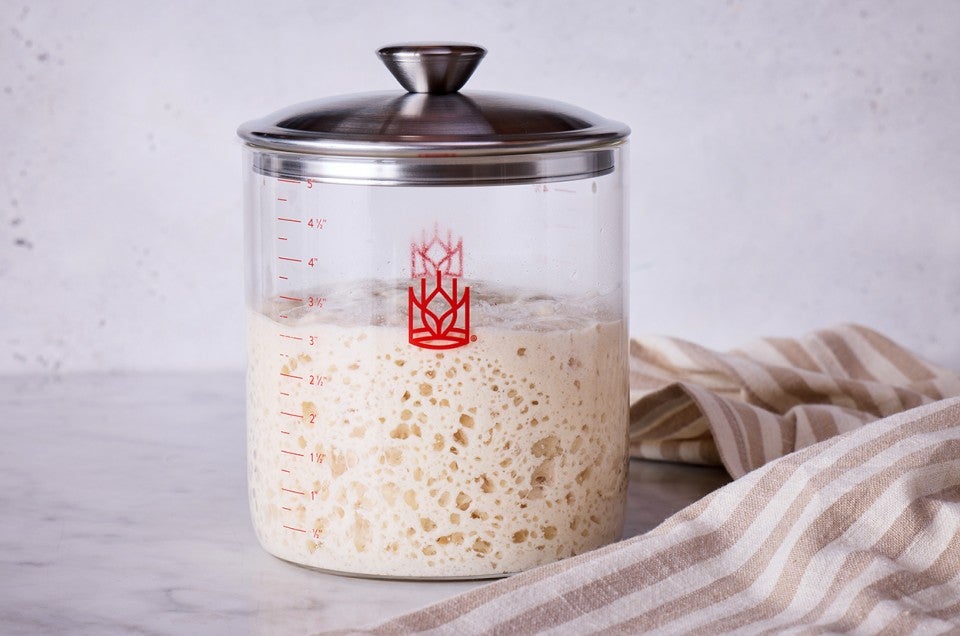


You want to make gluten-free sourdough bread. You've picked up a bag of gluten-free flour but ... what about the starter?
That’s where our gluten-free sourdough starter recipe comes in: It’s a simple, straightforward process similar to any other sourdough starter.
Of course, the main difference between regular starter and gluten-free starter is the flour you choose — you’ll need to make this starter with gluten-free flour.
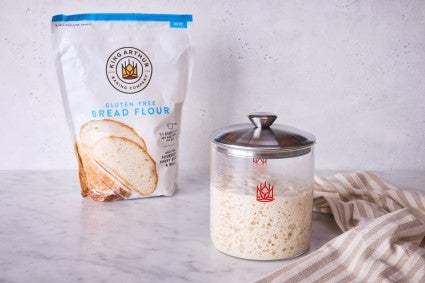
Our Gluten-Free Bread Flour is ideal for making a gluten-free starter. This flour is unique; most notably, it contains gluten-free wheat starch, which replicates the familiar smell and taste of conventional wheat flour-based starters. According to Jonathan Brasil, a member of our Research and Development team, “the resulting flavors [of a gluten-free starter made with our Gluten-Free Bread Flour] are more similar to conventional wheat sourdoughs than rice-based or teff-based sourdough starters.”
In addition, the enzymes and minerals in Gluten-Free Bread Flour promote fermentation, so the sourdough starter is usually up and running within a week. This overcomes a common hurdle in gluten-free starters — they’re often plagued by mold, because the fermentation in gluten-free starter happens so slowly that mold sets in before the starter has developed an appropriately acidic environment.
Another benefit? Starter made with Gluten-Free Bread Flour may be even more bulletproof than conventional sourdough starters. Thanks to the gums and fibers in Gluten-Free Bread Flour, gluten-free starters bind flour and liquid better, so they don’t really develop black liquid — known as “hooch” — the way a standard starter does. (Though of course, hooch isn’t inherently bad!)
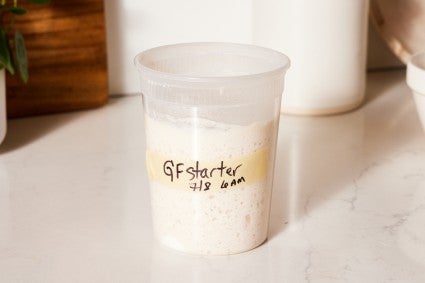
The process for making gluten-free starter is actually quite similar to regular starter: You mix Gluten-Free Bread Flour and water, then let the mixture ferment over several days and up to one week, regularly feeding it with fresh flour and water to fuel the microorganisms powering fermentation. Unlike traditional wheat-based sourdough starters, which need to be fed twice daily for optimal health and vigor, you only need to feed gluten-free starter once a day.
According to Jonathan, who developed our new gluten-free sourdough starter recipe, “the visual cues and smells in this gluten-free starter will mimic regular sourdough starter, so if that’s something you’re used to, it will be familiar here.”
One primary difference is that gluten-free flour is thirstier than all-purpose flour, so it requires more water to achieve the right consistency and fermentation level. Unlike regular starter, which typically (though not always) involves feeding in a 1:1 ratio — equal parts, by weight, flour and water — this gluten-free sourdough starter recipe has a roughly 2:1 (by weight) ratio of water to flour.
As outlined in our recipe, begin by combining 1 cup (120g) King Arthur Gluten-Free Bread Flour with 1 cup (227g) water. Cover the bowl and let the mixture rest overnight at room temperature.
The next day, uncover the starter and stir it several times, then re-cover and allow the starter to rest overnight at room temperature. This step helps kick off fermentation.
Now, you’ll begin regular daily feedings; this is similar to traditional sourdough starter, though you only need to feed gluten-free starter once a day (as opposed to twice a day for typical starter). Discard half the starter (about 1 cup or 173g) and feed the remainder with 1/2 cup plus 1 tablespoon (128g) cool water and 1/2 cup (60g) Gluten-Free Bread Flour. At this point, the starter can be transferred to a crock or large jar; a vessel with clear, straight-sided edges will make it easy to gauge the daily growth of your starter.
Keep repeating the once-a-day feeding process — around roughly the same time of day — until the starter is bubbling nicely and doubling in size within several hours after feeding, which will take about three to five days of regular feeding. At this point, it will be ready to use in bread; we recommend our Gluten-Free Sourdough Bread, a loaf with a crisp crust and excellent crumb that will make you rethink the possibilities of gluten-free bread.
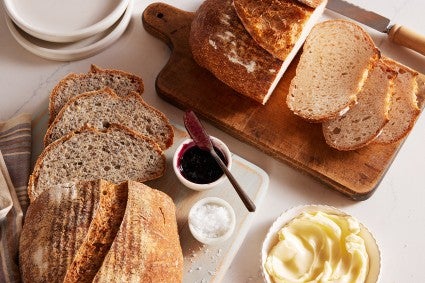
If you’re not baking with your starter regularly, you’ll still need to keep feeding it regularly, the same way you would a traditional starter, to keep it active.
Like regular sourdough starter, gluten-free sourdough starter can be kept in the refrigerator between feedings. Be sure to feed it at least once a week for long-term storage to keep it healthy. If you keep your starter at room temperature, feed it once daily to maintain activity. (If you're storing your starter in the fridge, you'll want to take it out a few days before you bake with it and give it a couple of daily room temperature feeds until it's bubbling nicely and doubling in size.)
Ready to bake gluten-free sourdough bread? Start with our gluten-free sourdough starter recipe, then bake a loaf of lofty gluten-free bread.
Cover photo by Rick Holbrook; food styling by Kaitlin Wayne.
